We had to ask Kate what this sign meant - do people here really just slap each other all the time in elevators? It actually means don't slap the doors, she said. The one inside her apartment also prohibits leaning.
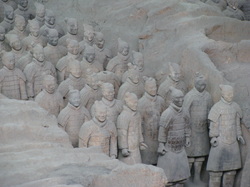
Back in the day (2,200 years ago), the Emperor Quin Shi Huangdi was a despot, a little obsessive compulsive about his own death and was very, very, very rich.
So naturally he had 700,000 of his people over several decades build him an army out of clay that could be buried in tombs near his own so that he could rule in the after life.
Hey, it probably sounded like a great plan at the time.
On the bright side for the 700,000 workers who had to to build the tombs and Terracotta Warriors, it could have been all of them buried alive in the tombs to guard him.
Out of this crackpot plan, though, came a remarkably well-preserved window into the past and the technology the Chinese had developed -- some of which didn't re-emerge until the 20th Century. (Read on to find out which ones.)

Claymation: Elizabeth looks slightly impressed as many of the first 6,000 restored Terracotta Warriors stand ready for action.
Some fun facts courtesy of our excellent guide, Lina:
- The faces are all individualized. "No twins," as Lina put it. They used two different molds for head shapes, then artisans crafted the faces to match individual soldiers.
- The detail on the soldiers were crafted right down to the hair styles, finger nails and -- get this -- finger prints.
- The tombs had probably been found scores of times over the centuries but because underground tombs are common, it wasn't a big deal until four farmers in 1974 found a Terracotta Warrior head while digging a well. They took it to the government in order to get a reward of about 40 yuan ($7 in today's dollars). As a result, the government realized what a prize this could be and immediately set up archaeological digs. The three founding farmers who are still living now get a 1,000 yuan-per-month pension ($165) and royalties from a book and autograph signings.
- The warriors were found smashed into pieces. Armies of revolting citizens smashed many of them after the emperor's death (remember, he was a despot, although he was the one to first unify China.) Many of the underground chambers were burned, which in some cases brought the heavy wooden ceiling beams of the burial chambers crashing down.
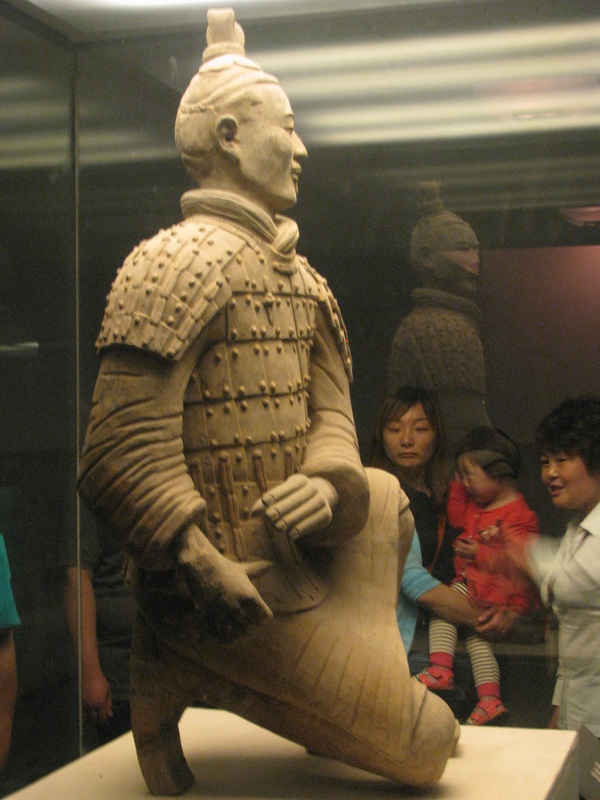
One lucky dude.
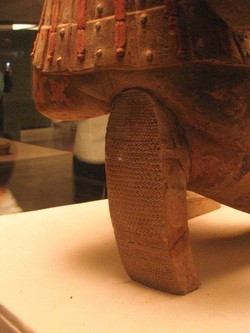
- Only one Terracotta warrior has been found in one piece so far -- a kneeling archer. The bottom of his shoe revealed more stunning detail: treads. "Original Nike design from 2,000 years ago," Lina said.
- Each soldier held weapons, many of them made from bronze. But also found was a chrome plated sword, crafted circa 200 B.C. That technology wasn't re-invented again until 1937 and 1950 in Germany and the United States, respectively.
It's too bad that technique was buried for all those centuries.
- Ryan and Elizabeth
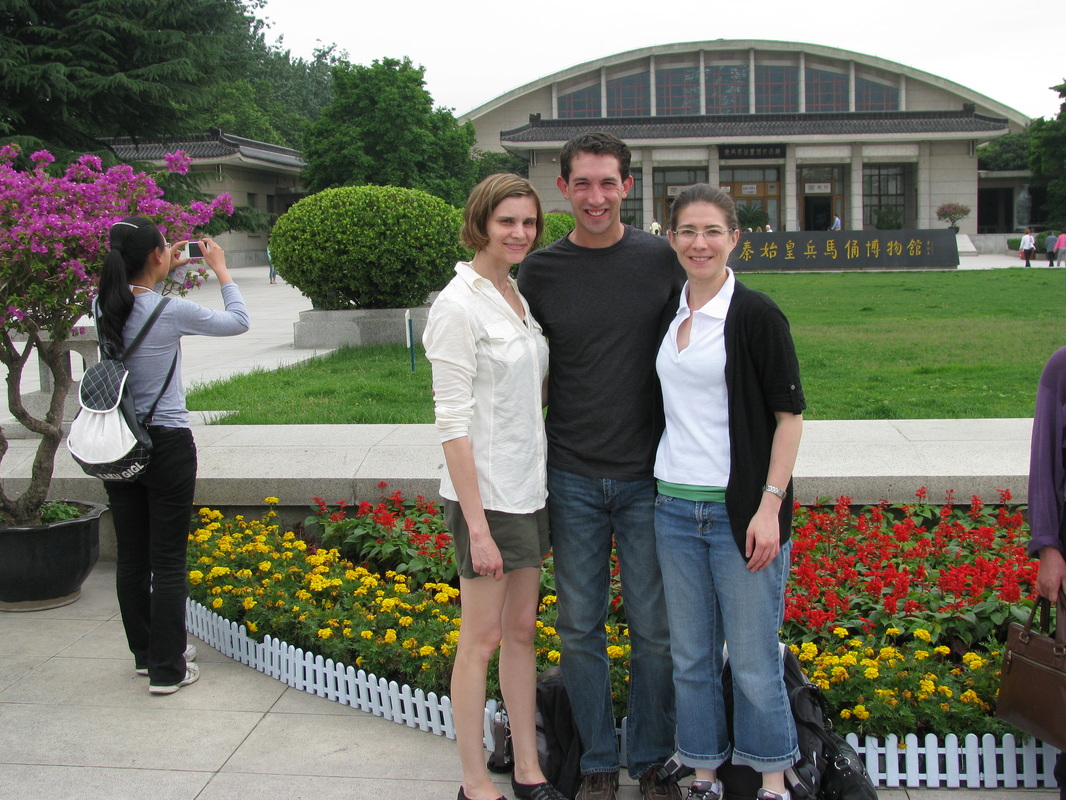
Group shot outside the entrance to Pit 1.

The first pit is huge in size. Pit 2 might just be bigger, but very little has been uncovered because the archaeologists hope to preserve the paint on the warriors and the technology doesn't exist yet.
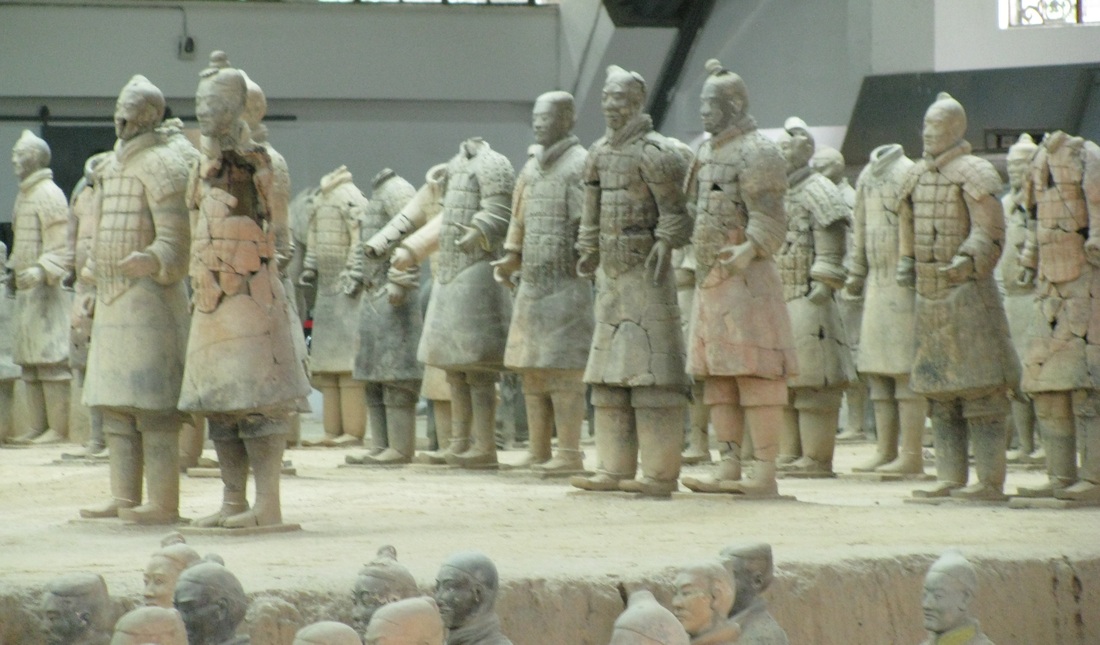
Warriors that are still being pieced together.

Calvary horses wore bridles made of jade and hinged together.

Two chariots have been found outside the emperor's tomb. They are only half size, because of how heavy they are. One original and one model are on display. The other original is on loan to a museum in Europe.
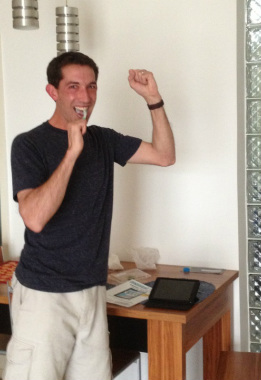
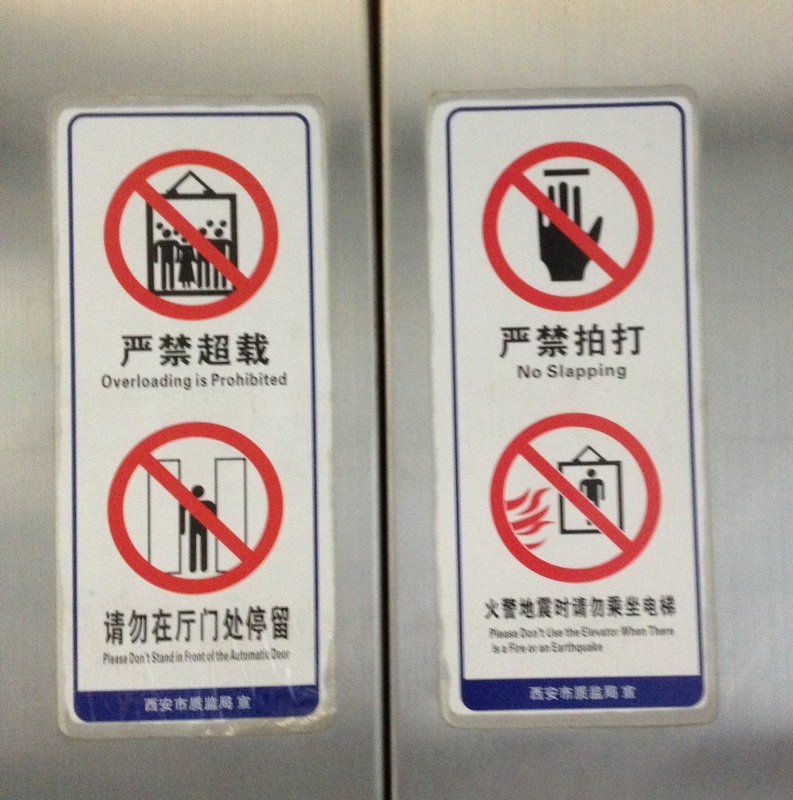









 RSS Feed
RSS Feed